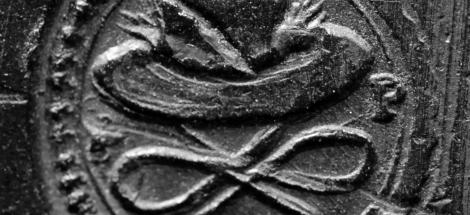Care and conservation

How you care for your pewter depends on the appearance you wish to achieve and maintain.
In daily use, pewter was kept bright and polished and some collectors prefer this appearance. Pewter does not tarnish like silver, so a periodic clean with an all-purpose metal (not silver) polish will keep it looking bright.
Much old pewter is patinated and has a colour ranging from mellow silver to charcoal grey, a more ‘antique’ appearance favoured by many collectors, especially in Britain and Europe . It is possible to restore patinated pieces to a brighter and polished condition and there are degrees of restoration depending on whether a completely untarnished appearance is preferred or whether some signs of age, e.g. oxidation in joints, dents, etc., should be apparent.
Oxidation on pewter varies according the composition of the alloy and even this composition can vary on individual pieces. Serious oxidation can eat right through the metal and eventually create holes, especially in sadware (dishes and chargers, for example). Expert guidance is needed if such pieces are to be restored. For other pieces, the following can be tried (although never on valuable pieces without practice or guidance).
Washing with hot, soapy water will often remove a surprising amount of dirt and tarnish and should always be the first step.
A light oxide can often be removed with a hard rub and repeated application of a proprietary metal (not silver) polish.
Use of a fine grade of emery paper, say 600 grade, wet and dry. A coarser grade may be tried to begin with, working up to finer grades. Dark, hard-metal items will be slow to respond to this treatment, however, and several applications may be needed.
Some restorers also use electrolysis to remove oxide but this is an even more skilled task.
We repeat, never attempt to restore old or valuable pieces without guidance and practice on non-valuable/unwanted items!
Finally, old and valuable pieces will benefit from an application of good quality neutral wax polish to enhance appearance and protect from further oxidation.
Note for marine archaeologists
Whilst hydrochloric acid is commonly used to remove calcareous encrustation from objects recovered from the seabed, it should not be used on pewter objects. This is because of the destructive action of chlorides on tin, which can continue despite best efforts to rinse the acid away after treatment. You should instead use dilute nitric acid (a 5 – 10% solution). This will remove the encrustation safely. It usually has no effect at all on the underlying patination, but at very worst it will simply put a thin oxide layer on the surface.